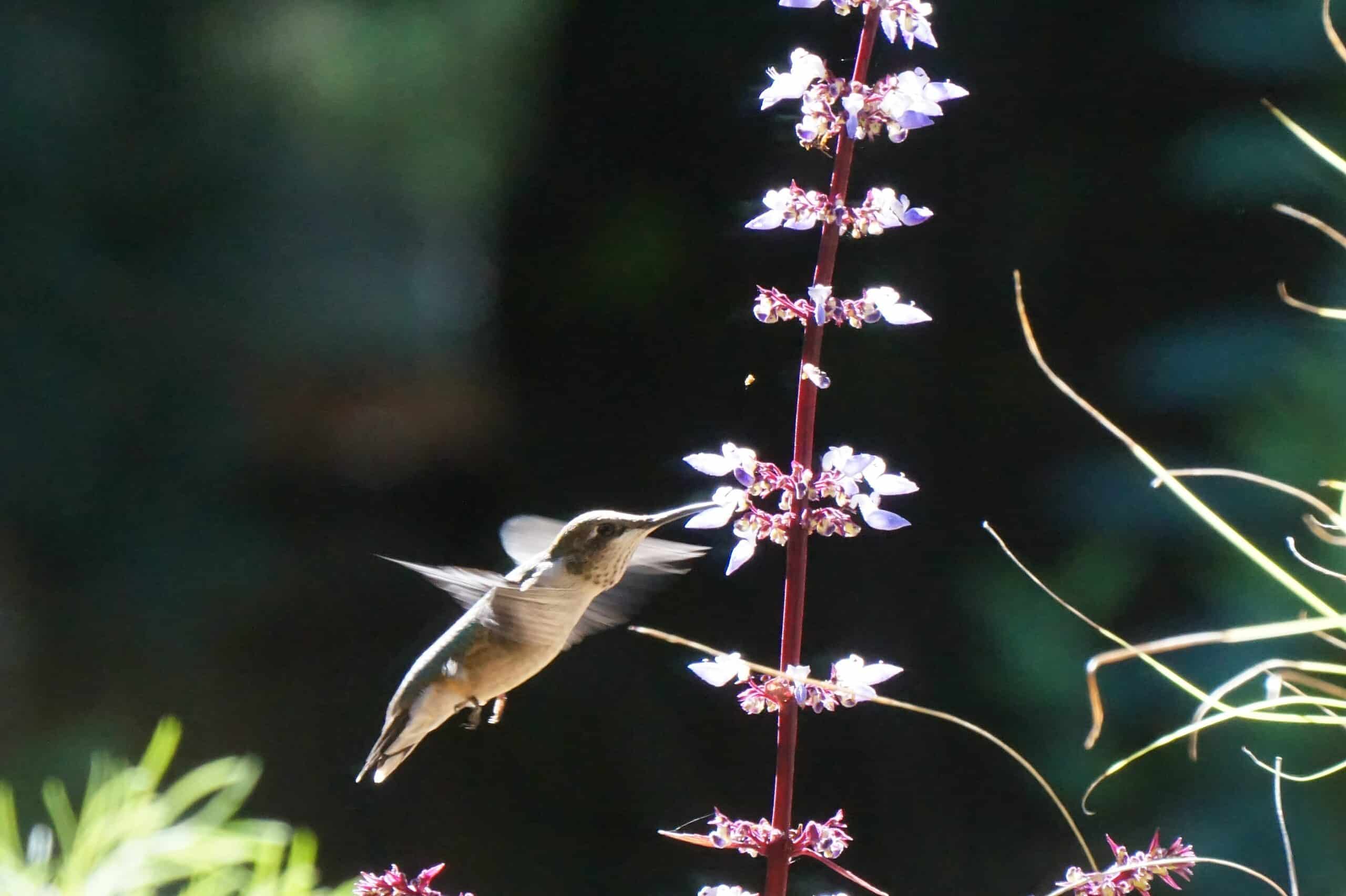Coleus is a beautiful and vibrant flowering plant that can add life to any indoor environment. As an ancient species, it has been used in gardens for centuries; however, its popularity has surged in recent years due to its hardy nature and ability to thrive indoors. In this article, we will explore the secrets of successfully growing and caring for this colorful addition to your home!
Growing Coleus indoors requires some special considerations. First and foremost, you must ensure that your chosen spot receives plenty of indirect sunlight throughout the day. It is also important to provide your plants with a well-draining potting soil that is enriched with nutrients. Additionally, they should be watered regularly while avoiding over-watering or letting them dry out completely between waterings.
Finally, it’s essential to keep an eye on the temperature in your home or office as Coleus prefers warm temperatures between 65-75°F (18-24°C). With these simple tips, you can easily cultivate healthy and vibrant Coleus plants all year long!
Types Of Coleus
Coleus plants are one of the most beloved and easy-care houseplants, offering vibrant foliage in shades of green and red. As a member of the mint family, there are many varieties available, each with unique characteristics. When choosing a coleus for your indoor space, it is important to get familiar with the different types available so you can find the one that best suits your needs.
The most popular type of coleus is the annual variety, which survive summer weather and require full sun exposure. These types grow quickly and reach heights of up to two feet tall, with leaflets in shades of red, pink, or purple. Some popular annual varieties include ‘Henna’ and ‘Mango Tango’, both known for their striking foliage colors.
Perennial coleus varieties are also available, though they tend to be a bit hardier than their annual counterparts. These plants will come back year after year if taken care of properly. Perennial varieties typically grow more slowly than annuals but offer an extensive range of colors and shapes that can add texture and interest to your indoor garden. Some popular perennial varieties include ‘Lime Marmalade’, ‘Countryside Red’, and ‘Kong Rose’.
No matter which type you choose, with proper sunlight and watering habits you will have a beautiful addition to any room in your home.
Where To Find Coleus Plants
For the garden enthusiast, coleus plants are like the pot of gold at the end of a rainbow. They come in an array of vibrant colors and can be found in almost any environment, making them a beautiful addition to your home or garden. Finding these plants is like embarking on a journey into an exotic land full of captivating foliage options.
As specialists in botany and gardening, we know where to find these lovely plants. Many nurseries and garden centers now offer pots of coleus for sale, so you can easily bring the beauty of the outdoors into your living space. You may even be able to find coleus cuttings or starts from friends or neighbors who have established their own thriving gardens. Additionally, online nurseries are popping up all over offering delivery options to purchase coleus right to your door!
Not only is it easy to find coleus plants but they also require minimal care once they’re settled in their new homes. With just a bit of know-how and some simple tips, you can create an amazing indoor mini-garden that will add life and color to any room!
Benefits Of Growing Coleus Indoors
Harnessing the power of coleus plants to beautify your home can be a delightful experience. As an avid gardener and botanist, I’m here to tell you that many people are unaware of the benefits of choosing this vibrant plant for their indoor decor. Let’s explore these advantages in more depth!
First of all, growing coleus indoors is a great way to bring color and texture into your house. With their wide variety of hues and shapes, these plants can help add visual interest to any room. Depending on the varieties you select, you may find yourself with bright reds, deep greens, or even speckled purples and yellows! Not only will they catch the eye but they’ll also give off a pleasant aroma that will fill your living space with warmth.
Additionally, taking care of these plants is relatively easy. They require minimal attention compared to other houseplants and thrive in both full sun and partial shade locations. This makes them perfect for those with busy lifestyles who don’t have much time for upkeep yet still want something beautiful in their home. Furthermore, if you’re looking for an air-purifying option for your abode then look no further – coleus are great at removing toxins from the air which helps improve your overall health!
So why not bring some color into your life? Whether it’s potted on a windowsill or used as a border along a hallway, coleus are sure to bring happiness and good vibes into any part of your dwelling! Now let’s take a look at how best to pot and repot these lovelies…
Potting And Repotting Coleus
Potting and repotting coleus is an important part of its indoor care. When first purchased, it should be transplanted into a container with drainage holes that’s one size bigger than the original pot. This helps to ensure that the roots have enough space to spread and grow freely. The type of soil used is also essential for successful potting or repotting.
When potting or repotting, it’s important to use a soil mix specifically designed for indoor plants. A good mix should include loam, peat moss, and perlite for adequate aeration and drainage. Additionally, the containers should be large enough to provide plenty of room for growth without becoming too crowded.
Coleus plants require regular fertilizing to stay healthy indoors. A slow-release fertilizer formulated for houseplants can help maintain optimum nutrition levels throughout their life cycle. It’s best to fertilize every few weeks during the growing season and reduce frequency in winter months when growth slows down significantly. With proper care, coleus can become a vibrant addition to any home or office space!
The next step in caring for coleus is understanding soil requirements – which will depend on the variety of plant chosen as well as its environment within the home or office setting.
Soil Requirements For Coleus
When it comes to caring for coleus indoors, soil requirements are essential. To ensure your coleus plants thrive, the right type of soil is key.
The best soil for growing coleus is a mixture of sand and loam. A combination of these two elements provides enough drainage and aeration for the root system of your plants. You can also use a potting mix that contains compost, as this will help retain moisture and provide essential nutrients.
In addition to soil requirements, you’ll also want to make sure the container your coleus is planted in has good drainage holes. The last thing you want is for water to be constantly sitting in the pot as this can lead to root rot and other issues with your plants’ health.
TIP: Make sure to monitor the moisture level in your pots — if it’s too dry or too wet, adjust accordingly. Too much moisture can suffocate roots and not enough can prevent adequate growth in your plants.
Water Requirements For Coleus
Like a common thread, the water requirements for coleus are of paramount importance when it comes to growing and caring for this indoor plant. To set the right conditions for growth, one must understand the intricacies of its watering needs. Let us therefore unravel the mysteries that surround it, weaving a tapestry of knowledge fit for a successful coleus-growing experience.
To start off, keep in mind that coleus is considered to be a tropical foliage plant. As such, its water needs should be met with frequent applications; however, without making it soggy. A good rule of thumb is to water the potting soil until it’s moist but not wet or soggy. This can be done by thoroughly drenching the soil once every week or two weeks depending on its dryness and your local climate. If you notice that its leaves are wilting or starting to droop, this could indicate an underlying moisture issue and may necessitate more frequent watering sessions.
In addition, if you want to take your coleus care up a notch – misting its leaves with water can help boost humidity levels and reduce transpiration losses in drier climates. While these practices may sound like extra work, they can go a long way towards creating an environment conducive to healthy growth.
With proper irrigation techniques in place, we can step into the next phase of growing coleus: providing adequate lighting conditions so that our plants can thrive indoors…
Lighting Requirements For Coleus
Lighting is a crucial element in providing the best environment for your indoor Coleus plant. It’s like the sun to a flower, giving it much-needed energy and nourishment for growth. The shifting and changing of the light creates a symphony of life that brings balance to your Coleus plants.
When selecting lighting, you must take into account the type of light bulbs you are using, how bright they are, as well as how far away they are from the plant. You will want to aim for an indirect but bright source of light that is roughly 12” away from your Coleus plant. Natural sunlight or LED grow lights work great for this type of setup.
Coleus plants respond very well to these types of environments, growing lush and vibrant leaves with plenty of beautiful colors. However, too much light can cause leaf discoloration or wilting which means you’ll need to adjust accordingly. If needed, you can use a sheer curtain or blinds to filter out some of the more intense rays from the sun or move your grow lights further away from the plant.
It’s important that you have a good understanding of your houseplant’s needs in order to give them their best chance at thriving indoors—temperature being one such requirement for keeping your Coleus healthy and happy!
Temperature Requirements For Coleus
The lush, vibrant colors of coleus make it a favorite houseplant, bringing life to any indoor space. While easy to take care of, understanding the temperature requirements for coleus is essential to keeping it looking its best. Let’s explore how temperatures affect this popular houseplant.
When it comes to temperature, coleus plants prefer warm conditions and should be kept at a minimum of 60°F (16°C). They thrive in temperatures between 70-75°F (21-24°C) and even higher if the humidity can be maintained. While the plant will tolerate cooler temperatures, the foliage may lose some of its color and become less compact. In extreme cold temperatures below 50°F (10°C), leaves may die back or drop off from the plant entirely.
During summer months when outside temperatures are high, you can place your potted coleus outdoors for added sunlight but make sure to bring it indoors before nightfall when temperatures begin to drop. Additionally, keep in mind that coleus can suffer from heat stress when exposed to direct sunlight for too long or in hot and dry conditions indoors where air conditioning is absent or inadequate. To alleviate these problems, mist your coleus regularly with water or run a humidifier nearby.
With proper attention paid to temperature requirements for your beloved houseplant, you can ensure that your coleus continues to look its best all year round!
Fertilizer Requirements For Coleus
Fertilizer requirements for coleus are important to consider when growing this attractive, colorful plant indoors. To keep your coleus looking its best, here are a few key points that are essential for success:
Feeding frequency is the most important factor in providing proper nutrition to your coleus. If you’re using a water-soluble fertilizer with a balanced nutrient ratio of 12-12-12 or 20-20-20, feed your plant every two weeks during the growing season and reduce feeding to once a month during winter dormancy.
Choose a slow-release or organic fertilizer specifically designed for indoor houseplants, or use liquid fertilizer diluted to half strength for maximum benefit. A soil test is also recommended as an easy way to check the nutrient levels in your soil before applying any type of fertilizer.
Be sure not to overfertilize, as this can burn delicate foliage and cause discoloration and yellowing leaves. It’s always better to fertilize at lower rates more often than higher amounts less frequently.
By following these guidelines, you can make sure that your coleus plants receive the nutrition they need without risking damage to their foliage or growth patterns. Next up on our list of topics is the propagation of coleus — let’s take a look at how it’s done!
Propagation Of Coleus
Propagating coleus is like planting a new garden in miniature. With just a few simple steps, you can have a thriving collection of these vibrant plants to brighten up any indoor space. As a specialist in botany and gardening, I’ll share my expert tips for propagating coleus with you.
Coleus are easy to propagate from cuttings taken from the parent plant. All you need to do is take 4-6 inch cuttings from mature stems and remove the lower leaves. Plunge the cut end of the stem into some damp potting mix and keep it moist until roots appear. You can also use water as an alternative; simply put cuttings in a glass filled with water, making sure to change the water every couple of days until roots appear.
Cuttings can be planted directly into pots or trays and kept indoors, or planted out into well-drained soil when all danger of frost has passed. Keep your coleus in warm, sunny conditions for best results — indirect sunlight is ideal for indoor propagation — and fertilize regularly to ensure healthy growth. With these simple steps, you’ll soon have lots of lovely new plants!
Pruning your coleus will help promote bushier growth and encourage more vibrant foliage colors — let’s find out how best to do it…
Pruning Coleus
Pruning is an important part of caring for coleus plants indoors. This practice will help keep your plant looking its best and can even help encourage new growth. As with any pruning, the key to success lies in understanding what should be cut and when it should be done.
When pruning coleus, it’s best to use clean, sharp tools. Cut only healthy stems and foliage that are no longer attractive or have become leggy. Doing so will help promote new growth from the base of the plant and prevent overcrowding. When dealing with a particularly large or overgrown coleus, you may need to prune some of the older stems back to the ground to stimulate new growth.
To keep your coleus looking its best, it’s also important to deadhead blooms as they fade away. Doing so will encourage more flowers and prevent the plant from wasting energy on seed production. With regular maintenance, your coleus will stay lush and vibrant throughout the season. Moving on from here, we’ll look at pest and disease control for your beloved indoor plant.
Pest And Disease Control For Coleus
Coleus plants are a delightful addition to any indoor garden, but they require diligent care and maintenance in order to thrive. From pruning to pest and disease control, the health of your coleus will depend on how well you tend to it. Let’s explore the keys to successful pest and disease control for coleus.
Gardeners must be vigilant when it comes to protecting their beloved coleus from disease and pests. Here are three key strategies for preventing or controlling problems:
- Provide adequate air circulation around your plants;
- Check regularly for insects or signs of disease;
- Remove affected parts of the plant immediately if infested or diseased.
It’s vital that you take preventive measures such as these in order to keep your coleus healthy and free of harmful pests and diseases. While there is no fool-proof way of guaranteeing a pest-free environment, employing these tactics will help protect your plant from harm. Additionally, many common problems can be avoided simply by adhering to proper care instructions, such as watering correctly and avoiding over-fertilization. This will go a long way towards keeping your coleus looking its best! Now let’s move onto common issues with coleus plants…
Common Problems With Coleus
Tending to coleus plants can be like solving a puzzle: each piece of the puzzle needs to fit together perfectly for success. Just as putting together a jigsaw requires some detective work, so too does taking care of these vibrant foliage plants. As we now move from pest and disease control to common problems with coleus, let us explore the nuances of proper coleus plant care.
The first issue we must address is over-watering. Coleus plants are prone to root rot when exposed to stagnant water, so it is important to provide adequate drainage and avoid overwatering. If you notice yellowing leaves or mushy stems, this could indicate root rot due to overwatering. To prevent this, ensure that your potting mix drains well and water only when the top few inches of soil have dried out completely.
Under-watering can also present problems for coleus plants; stunted growth, wilting leaves, and drooping stems are all telltale signs of dehydration stress in these plants. Regularly check the soil moisture levels with your finger and if dry, give your coleus a thorough watering until it starts draining from the bottom of the pot. You should also consider using a humidity tray or humidifier if you find yourself dealing with dry air indoors frequently.
By following these simple steps and paying close attention to potential signs of distress in your plants, you will be well on your way towards troubleshooting coleus plant care issues quickly and effectively.
Troubleshooting Coleus Plant Care
Troubleshooting coleus plant care can be an intimidating task. But with the right knowledge and guidance, it doesn’t have to be a daunting experience. Whether you’re growing coleus indoors or outdoors, there are some common challenges that you may face. Here are some tips to help you troubleshoot:
• Check the lighting – Coleus plants thrive in bright indirect sunlight. If yours is not getting enough light, it may start to stretch out towards the light source. Make sure your plant isn’t too close to a window and adjust its position accordingly.
• Monitor watering – Overwatering can lead to root rot and cause leaves to yellow. Under-watering can make the leaves droop and wilt. To ensure proper hydration, check the soil before watering each time and water only when necessary.
• Watch for pests – Aphids, mealybugs, and spider mites are some of the most common pests that may attack your coleus plant indoors. Regularly inspect your plant for any signs of infestation and treat with an insecticidal soap if needed.
By following these tips, you will be able to successfully troubleshoot any issues that arise during the care of your coleus plants. With just a bit of extra effort on your part, you can keep them looking their best all year round! Now let’s take a look at some tips for growing healthy coleus indoors…
Tips For Growing Healthy Coleus Indoors
As you look around your home, you may notice a splash of vibrant color amidst the greenery. It’s likely that you’re looking at a beautiful coleus plant, with its colorful foliage and delicate blooms. Growing healthy coleus indoors is not as difficult as it seems, and with some simple tips and tricks, you’ll be able to maintain a thriving plant in no time.
Let’s start by discussing the right environment for your coleus. You’ll want to make sure the area is well-ventilated, with indirect sunlight throughout the day. Humidity levels should also be taken into consideration; they should be around 40% to 60%. If your home has low humidity levels, misting the leaves can help keep them hydrated and healthy. Additionally, when it comes to soil, rich organic mix is preferred for coleus plants; this will ensure optimal drainage without becoming waterlogged.
Now let’s go over watering practices for a healthy coleus indoors. Overwatering can cause root rot or other issues such as wilting or yellowing leaves. So when it comes to watering your coleus, less is more! Make sure the soil is dry before adding any additional water; check by sticking your finger into the soil up to two inches deep. If it feels dry then add just enough water until it starts draining from the bottom of the container – but no more!
To keep your coleus looking its best, regular pruning and trimming are recommended. This will help maintain an attractive shape and encourage new growth while getting rid of any old or wilted leaves that may have accumulated over time. With these tips in mind, growing healthy coleus indoors should be easier than ever!
Frequently Asked Questions
How Long Does It Take For Coleus To Propagate?
Did you know that Coleus plants can propagate in as little as two weeks? This is an incredibly quick rate of growth compared to other houseplants, and it’s one of the reasons why they are so popular. But how long does it take for Coleus to fully propagate?
Coleus propagation is a relatively simple process. You can start by taking cuttings from mature plants and placing them into potting soil. These cuttings will then start to root and form new plants after approximately two weeks. The time taken for a cutting to grow into a fully-formed plant depends on the variety of Coleus you are growing and the conditions in which it’s kept. It typically takes between 4-6 weeks for the plant to be ready for transplanting.
Once your Coleus has rooted, you can transfer it into a larger pot with fresh compost or repotting mix. Make sure that your pot has good drainage and provide plenty of light and warmth so your plant can thrive. Give your newly propagated Coleus regular watering, but avoid over-watering as this may cause root rot. Applying fertilizer every few weeks will help keep your plant healthy and promote strong growth.
With proper care, your Coleus should continue to produce beautiful foliage year after year! So if you’re looking for an easy-to-care-for houseplant, look no further than this colorful addition to any home garden.
What Type Of Pests And Diseases Should I Watch Out For When Caring For Coleus?
Coleus plants are a popular houseplant for many gardeners, with over 300 varieties to choose from. In fact, the American Coleus Society recently identified that there were almost 600 different colors and patterns of coleus leaves. With such a vast array of options, it’s no wonder why they’re growing in popularity! However, when caring for coleus, it’s important to be aware of potential pests and diseases that could affect your plant. Here are four common threats to watch out for:
Fungal Disease: Fungal diseases can cause leaf spot or root rot which can lead to the death of your plant. To reduce the risk of fungal diseases, water the soil instead of directly onto the leaves and keep humidity levels low by avoiding overcrowding your plants.
Aphids: These small insects feed on the sap from the leaves of coleus plants and can quickly spread across an entire plant if left untreated. To get rid of aphids, use neem oil or insecticidal soap which should help control them without harming other beneficial insects in your garden.
Spider Mites: These tiny mites thrive in dry conditions and can cause discoloration or yellowing of leaves as well as webbing on the foliage. To prevent spider mites from taking hold in your garden, increase humidity levels by misting plants regularly or using a humidifier near them.
Slugs & Snails: These slimy critters love to feast on tender new growth so it’s important to check for signs of damage regularly and take steps to control them if needed such as setting up beer traps or using slug-proof barriers around plants.
When caring for coleus plants indoors, there are several pests and diseases you should look out for that could threaten their health and wellbeing. Taking proactive measures like increasing humidity levels or treating problems early can help ensure that your coleus remain healthy and beautiful throughout their life cycle – something we all want!
How Often Should I Prune My Coleus?
Pruning is an essential part of keeping your coleus healthy and attractive. It helps to keep it at the size you want and encourages new growth. But how often should you prune your coleus?
As a general rule, pruning should be done every few weeks during the growing season. This will help ensure that your plant remains full and bushy, rather than leggy or straggly. When pruning, remove any dead or damaged leaves, as well as any flower stems that develop; this will help to keep the plant looking neat and tidy. Also remember to trim back branches that are too long so that they don’t become unbalanced.
It’s important not to over-prune your coleus, as this can cause stress to the plant and may even inhibit its growth. If you’re unsure how much to trim off each time, start off by taking just a few inches off the ends of each branch. This way you’ll get an idea of what looks best without doing too much damage. With regular pruning, you’ll soon be able to maintain your coleus in top condition throughout its growing season!
Does Coleus Require Any Special Type Of Potting Soil?
When it comes to potting soil for Coleus plants, there are a few things to consider. First of all, these plants thrive in moist, well-draining soil that is slightly acidic. Therefore, it’s important to use a potting mix that has good drainage and aeration qualities.
Secondly, it’s best to use a soil mix specifically formulated for indoor container gardening. This type of mix will provide the necessary nutrients needed by your Coleus plant. Additionally, adding organic matter such as compost or worm castings can help improve the structure and fertility of the soil.
Finally, you should water your Coleus regularly. Make sure that the top inch or two of soil is always moist but not soggy; if it’s too dry or too wet, your Coleus won’t do well. If you consistently provide your Coleus with the proper moisture level and correct potting soil mix, you can expect healthy growth and vibrant colors from this beautiful indoor plant!
What Temperature Should I Keep My Coleus At For Optimal Growth?
To ensure optimal growth of your coleus plant, temperature is a crucial factor to consider. As with most houseplants, warm temperatures in the range of 65-75°F (18-24°C) are ideal for your coleus. It’s worth noting that if the temperature drops below 60°F (16°C), your coleus may become stressed and less likely to thrive. To put it simply, if you want to keep your coleus looking its best, make sure it’s not exposed to any temperatures lower than 60°F (16°C).
When it comes to potting soil, regular potting mix will do just fine for your coleus. However, I would recommend using a soil mix that’s rich in organic matter and has good drainage capabilities. The addition of perlite or vermiculite can help keep the soil light and airy and allow excess water to drain away quickly. Additionally, adding some slow-release fertilizer to the potting mix can give your coleus an extra boost during the growing season.
So if you want to get the most out of your indoor gardening experience and give your coleus a fighting chance at success, make sure you keep an eye on the temperature and provide it with nutrient-rich soil that drains easily. Like any living thing, plants need a bit of TLC in order for them to reach their full potential – so don’t forget about yours! With proper care and attention – as well as maintaining an optimal temperature – you’ll be rewarded with vibrant foliage in no time!
Conclusion
In conclusion, the Coleus plant is a great addition to any indoor garden. It is a hardy plant that requires minimal care and attention in order to thrive. With proper care, it will quickly propagate and bring beautiful foliage and vibrant colors indoors.
However, it is important to remember that Coleus does require some special attention when it comes to pest control, pruning, temperature control and potting soil. By following my advice on these topics you can ensure that your Coleus remains healthy and lush for many years to come.
Finally, with the right knowledge and dedication you can create a thriving indoor garden with a beautiful array of Coleus plants as the centerpiece. With its attractive leaves and eye-catching flowers this plant will surely add beauty to any home or office space. So what are you waiting for? Get growing!





























